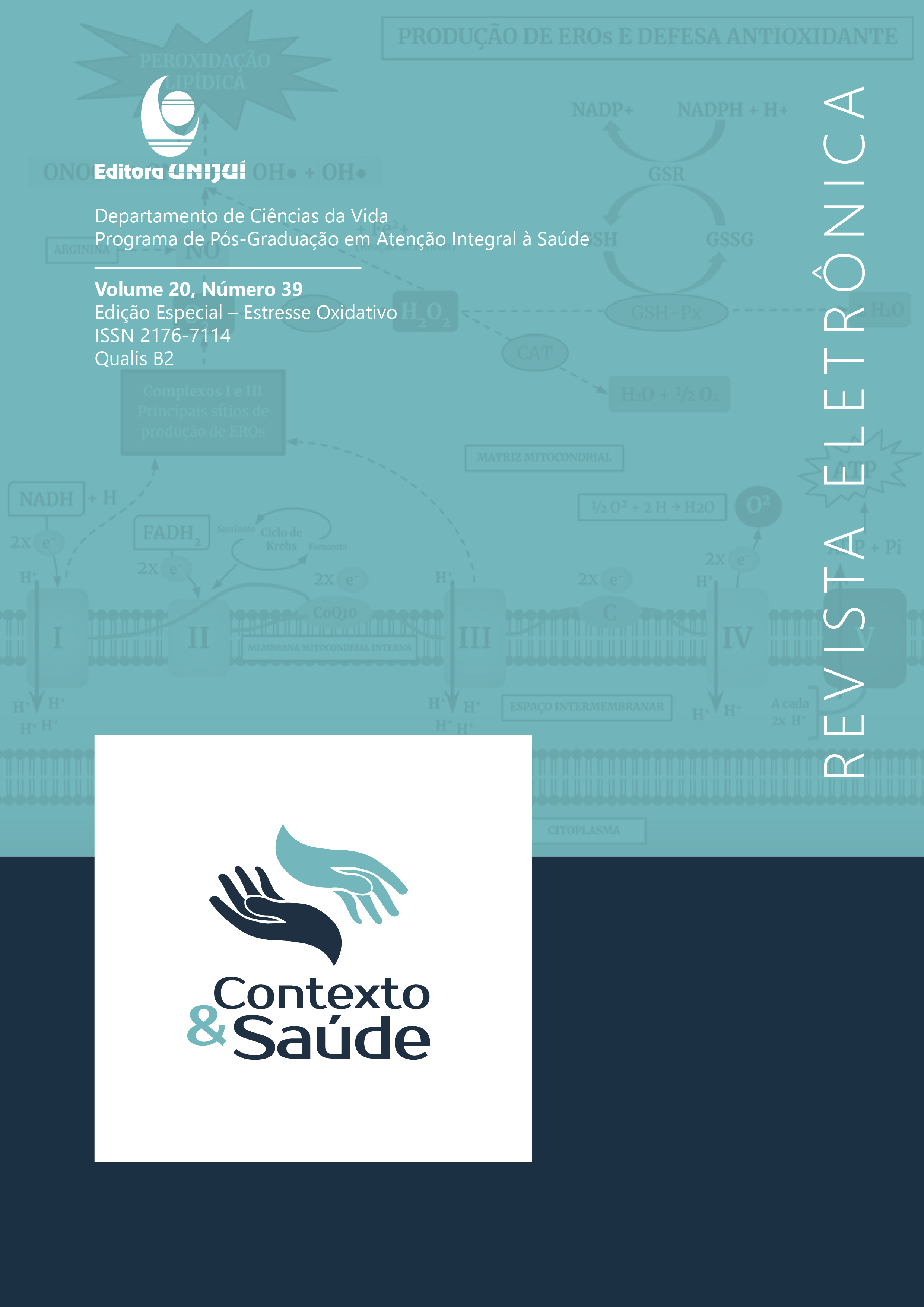THE CONSUMPTION OF FRUITS AS A POTENTIAL ALTERNATIVE TO ACCELERATE THE RECOVERY PROCESS AFTER HIGH INTENSITY EXERCISE
DOI:
https://doi.org/10.21527/2176-7114.2020.39.41-48Palavras-chave:
body regeneration, muscle damage, cherry, blueberryResumo
A prevalent desire in the sports world is the acceleration of post-exercise recovery; therefore, many studies have examined the use of dietary supplements before, during, and after exercise to determine the positive effects on athletes as a catalyst for recovery. Overall, studies have found that adaptations to regular exercise promotes advantageous reactions in the body to boost the immune system, prevent dyslipidemia and muscle loss, and increase bone density. However, exercise at an increased intensity or duration usually performed under competitive settings can deplete glycogen stores, increase lactic acid, form an excess amount of reactive oxygen species (ROS), increase tissue damage, and decrease immunologic function. This review incorporated studies that tested the use of fruits as a strategy to attenuate the period by which the body buffers the increase in acidity and inflammation, scavenge ROS and to regenerate muscle damage after high intensity exercise. Therefore, the effect of fruit intake rich in vitamins and those containing polyphenolic ring-based flavonoids and carbohydrates was discussed. Nutrient supplementation can enhance recovery after high intensity exercise, particularly fruits of red-blue color such as cherries and blueberries seem to decrease oxidative stress, inflammation, and muscle damage. In summary, each fruit has specific targets to offset body regeneration, avoid over training, and improve overall performance.
Downloads
Publicado
Como Citar
Edição
Seção
Licença
Ao publicar na Revista Contexto & Saúde, os autores concordam com os seguintes termos:
Os trabalhos seguem a licença Creative Commons Atribuição 4.0 Internacional (CC BY 4.0), que permite:
Compartilhar — copiar e redistribuir o material em qualquer meio ou formato;
Adaptar — remixar, transformar e criar a partir do material para qualquer fim, inclusive comercial.
Essas permissões são irrevogáveis, desde que respeitados os seguintes termos:
Atribuição — os autores devem ser devidamente creditados, com link para a licença e indicação de eventuais alterações realizadas.
Sem restrições adicionais — não podem ser aplicadas condições legais ou tecnológicas que restrinjam o uso permitido pela licença.
Avisos:
A licença não se aplica a elementos em domínio público ou cobertos por exceções legais.
A licença não garante todos os direitos necessários para usos específicos (ex.: direitos de imagem, privacidade ou morais).
A revista não se responsabiliza pelas opiniões expressas nos artigos, que são de exclusiva responsabilidade dos autores. O Editor, com o apoio do Comitê Editorial, reserva-se o direito de sugerir ou solicitar modificações quando necessário.
Somente serão aceitos artigos científicos originais, com resultados de pesquisas de interesse que não tenham sido publicados nem submetidos simultaneamente a outro periódico com o mesmo objetivo.
A menção a marcas comerciais ou produtos específicos destina-se apenas à identificação, sem qualquer vínculo promocional por parte dos autores ou da revista.
Contrato de Licença (para artigos publicados a partir de setembro/2025): Os autores mantém os direitos autorais sobre seu artigo, e concedem à Revista Contexto & Saúde o direito de primeira publicação.

